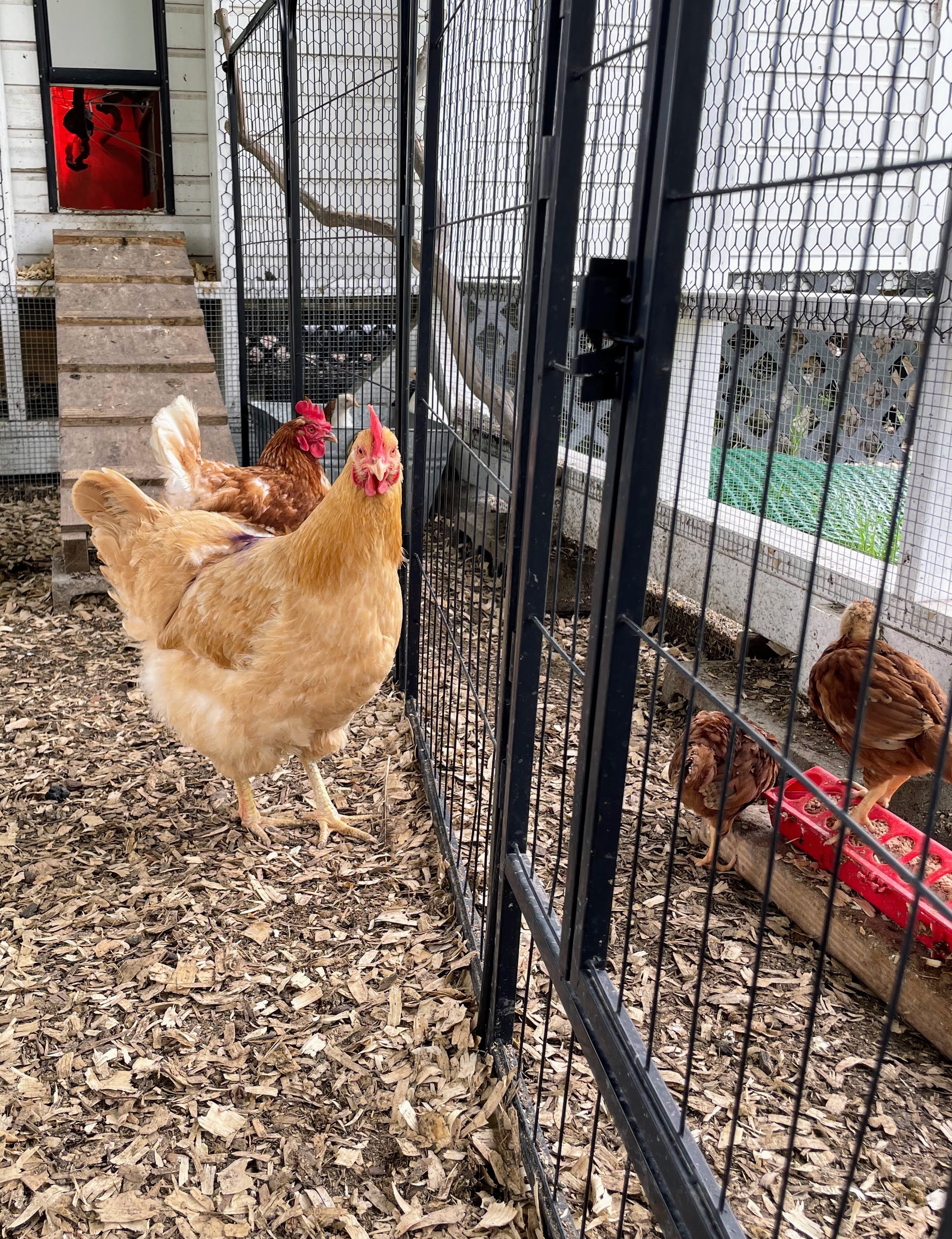Introducing Chicks To Your Flock
Over the years, we have added to our flock each spring. I don’t consider myself a chicken expert, but I do consider myself an expert researcher. Our method has been refined over the years, but as you read this, keep in mind that different strokes for different folks is quite in play!
At Salt Ranch, here we have a rather large (for a backyard) chicken coop, so raising chicks is pretty convenient for us. The front half of our coop is a large storage area and this is where we keep our brooder when it is not chick season, we use it to store all of the bedding, bags and extra feed bags. For our brooder, we just use an oval shaped stock tank that we picked up at Tractor Supply. We usually chicks each spring and we’ve topped our flock at around 24 hens. A lot of sources will tell you that you should introduce a like sized flock to a like size flock, but we have never found this to be necessary, we leave our chicks in the brooder for about the first six weeks until they are fully feathered and strong enough to move quickly.
At about the six week mark they are getting uncomfortably tight in the stock tank, so we partition off a small area inside our coop and move them there for a few days. This way, our big chickens and our new babies can check each other out for a bit of time before we bring down the wall separating them. Our next step is to partition off a section of the run for them.
The nursery setup
We use a pet fence that we purchased and which we use all over the property for various things. It is extremely handy to have. We bought two and use what we need to suite each circumstance.
The beauty of this partition is the flexibility. In this case, we set it up in two sections so that the chicks have an opening at either end and in the center. We separate the pieces so that the chicks can get in and out but the big birds won’t fit. This way the checks can escape from the bigger birds if they start getting picked on - which they do at the beginning quite a bit!
Since chickens are not particularly smart, we do have to go out each night at sundown and physically put the new chicks into the coop from the run for a week until they figure it out on their own. Part of it is that they don’t know to go inside at night, and part of it is that they are afraid of getting pounced on by their elders. It’s a legit fear, so I usually wait until the OG’s (original girls)are roosted and snuggled in before I transfer the chicks.
We leave this set up until the flock naturally intermingles. It can take up to 30 days. We have 20 different breeds and we have found that each breed is a little bit different. Our speckled Sussex is extremely friendly with the new chicks while our Orpingtons (Buff and Lavender) are pretty aggressive. Our Wyandottes don’t bother with them and our Rhode Island reds are extremely curious but keep their distance. The higher they are in the pecking order, obviously the more assertive they will be.
Once they’ve more or less merged, we reduce the escape room to just contain some food and water in case they can’t get to the feeders. We keep two feeders and two waters for the adults and a set for the teenagers to keep down the food fights.
It’s a stressful time for the flock, so we try to make it as easy as possible on them. It’s like having a whole new group of kids at school, and they have to fight out who’s going to be the most popular. Having plenty of options for food and water, as well as enough space for everybody to move around, keeps the stress level lower so they can focus on their hierarchy and nobody goes to bed hungry.





